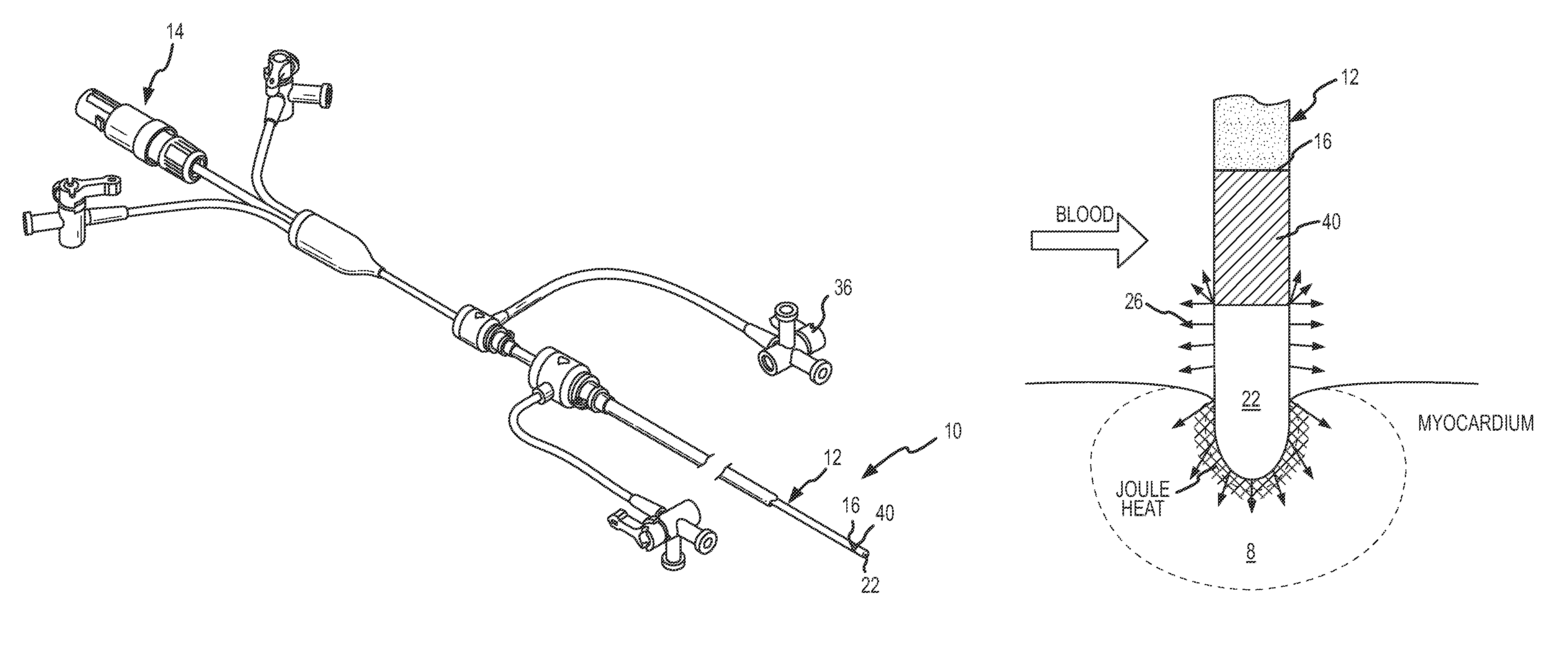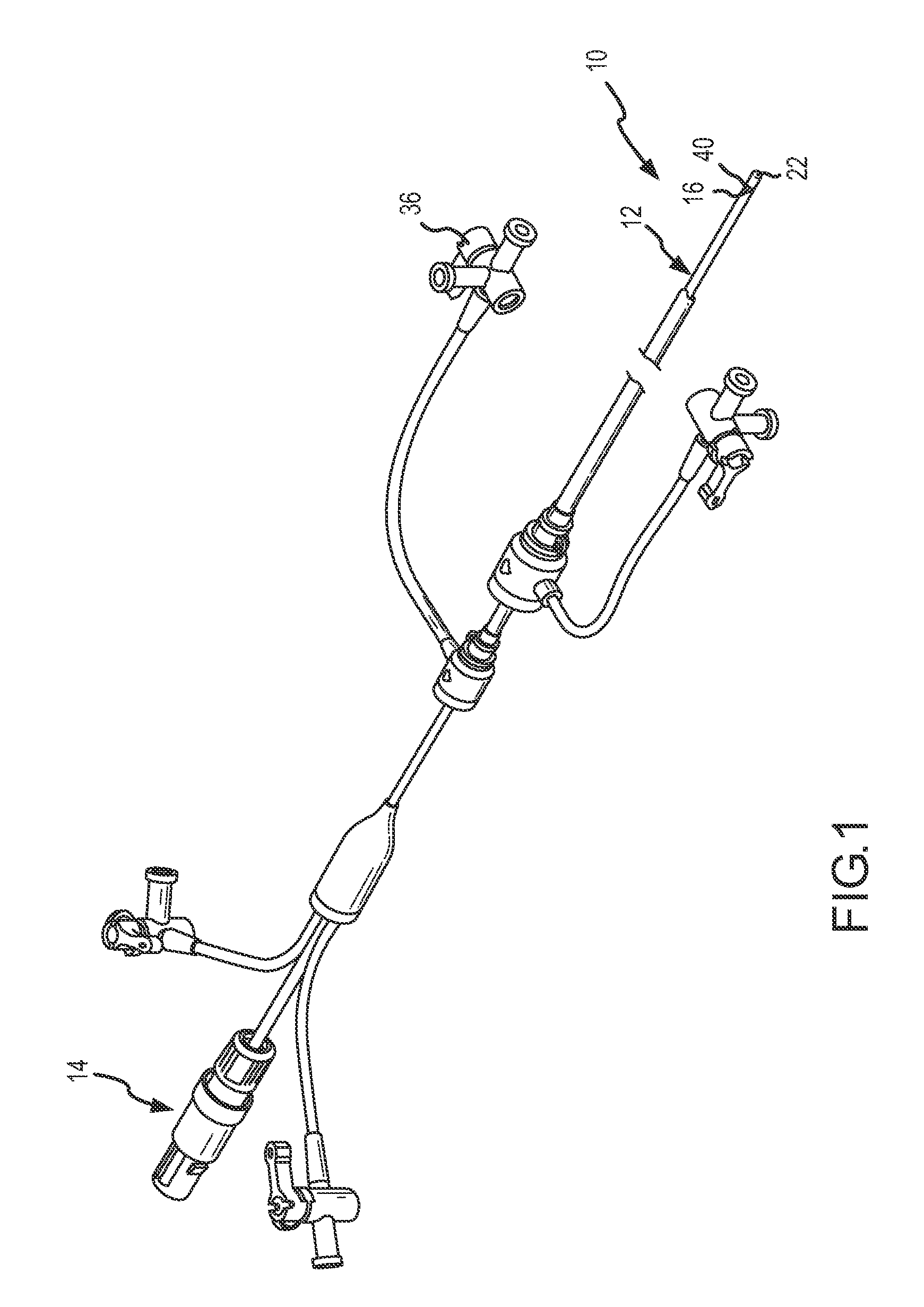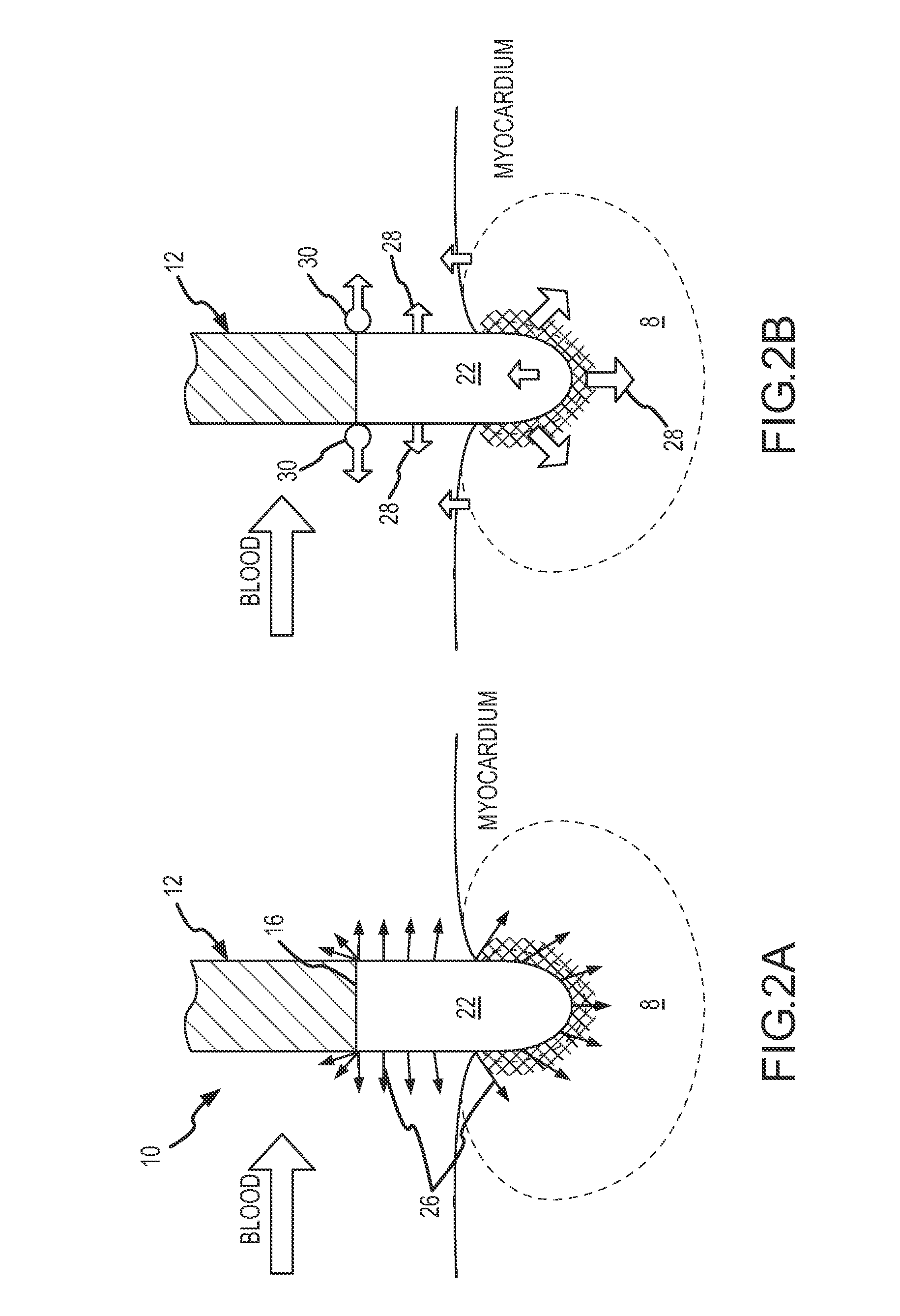Ablation catheter with thermally mediated catheter body for mitigating blood coagulation and creating larger lesion
a catheter body and catheter technology, applied in the field of catheters for human tissue ablation, can solve the problems of increasing the likelihood of thromboembolism, increasing the risk of thromboembolism, and significant patient discomfort, so as to prevent excessive heat buildup within the electrode, increase the surface area of the electrode, and improve the effect of energy dissipation
- Summary
- Abstract
- Description
- Claims
- Application Information
AI Technical Summary
Benefits of technology
Problems solved by technology
Method used
Image
Examples
Embodiment Construction
[0043]The ablation catheter 10 of the present invention as shown in FIG. 1 is comprised of a catheter body 12 with a proximal end 14 and a distal end 16, at least one lumen (not shown) extending lengthwise substantially through the catheter body 12, and an electrode (22), secured relative to the distal end 16 of catheter body. In the present embodiment, a heat sink element 40 is disposed between the distal end 16 of the catheter body 12 and the electrode, as will be more fully discussed herein. The catheter body 12 may be a conventional elongated catheter made of materials suitable for use in humans, such as nonconductive polymers. Exemplary polymers used for the production of the catheter body include those well known in the art such as thermoplastic polyurethanes, thermoplastic elastomers (polyamide-based, polyester-based, olefinic and styrenic), polyolefins, nylons, polytetrafluoroethylene, polyvinylidene fluoride, and fluorinated ethylene propylene polymers and other conventiona...
PUM
 Login to View More
Login to View More Abstract
Description
Claims
Application Information
 Login to View More
Login to View More - R&D
- Intellectual Property
- Life Sciences
- Materials
- Tech Scout
- Unparalleled Data Quality
- Higher Quality Content
- 60% Fewer Hallucinations
Browse by: Latest US Patents, China's latest patents, Technical Efficacy Thesaurus, Application Domain, Technology Topic, Popular Technical Reports.
© 2025 PatSnap. All rights reserved.Legal|Privacy policy|Modern Slavery Act Transparency Statement|Sitemap|About US| Contact US: help@patsnap.com



